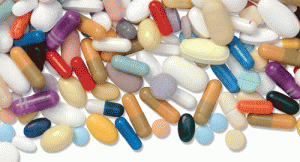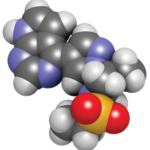 What Are the Therapeutic Alternatives When a Janus Kinase Inhibitor Fails to Work?
What Are the Therapeutic Alternatives When a Janus Kinase Inhibitor Fails to Work?
SAN DIEGO—Treatment alternatives after Janus kinase (JAK) inhibitor failure in real-life conditions were analyzed and presented at ACR Convergence 2023 by Pablo Francisco Muñoz Martínez, a rheumatologist at the Hospital Universitario y Politécnico La Fe, Sagunto, Spain.1
JAK inhibitors are newer, targeted disease-modifying anti-rheumatic drugs (DMARDs) being used for immune-mediated diseases, such as rheumatoid arthritis (RA), psoriatic arthritis and axial spondyloarthritis. The first JAK inhibitor approved in the U.S. was tofacitinib (Xeljanz) for the treatment of RA.2 Subsequent approvals included baricitinib (Olumiant), and upadacitinib (Rinvoq). Filgotinib, another JAK inhibitor, is not approved in the U.S. This class of medications included the first oral agents to have comparable effectiveness to biological DMARDs (bDMARDs), hence their popularity in managing patients.
JAK inhibitors are not without risk. They carry an increased risk of infection and may increase the risk of malignancy, venous thromboembolism and major cardiovascular events.3
The authors of this presentation agree that the evidence supporting therapeutic alternatives in real life after a JAK inhibitor fails to help a patient is limited. Should one use another JAK inhibitor or change to an entirely different agent with a different therapeutic target?
Methods
This was a retrospective, longitudinal, observational study of patients who had started taking a JAK inhibitor but had discontinued that treatment between 2013 and 2022. The patients’ electronic medical records were used to obtain demographic information and clinical variable information.
After the JAK inhibitor was stopped, patterns of switching and cycling the prescribed medication—classified by drug targets: anti-tumor necrosis factor (TNF), anti-interleukin (IL) 6, anti- cytotoxic T-lymphocyte associated protein 4 (CTLA4), anti-IL-12/23, anti-IL-17, anti-IL-23, another JAK inhibitor or another mechanism, such as anti-CD20—were analyzed. The retention rate at nine months following the start of the new treatment was evaluated.
Results
In this analysis, the most commonly prescribed JAK inhibitor was tofacitinib (n=119), followed by baricitinib (n=76), upadacitinib (n=66) and filgotinib (n=4). The most common indications for JAK inhibitor treatment were RA (n=71) and psoriatic arthritis (n=12).
A total of 265 JAK inhibitor prescriptions with 95 JAK inhibitor treatment failures were included. Tofacitinib had the highest failure rate (n=61) of the JAK inhibitors, followed by baricitinib (n=22) and upadacitinib (n=12). There was not enough data to evaluate the failure rate of filgotinib because it had only recently been approved for use in the Spanish market.
The majority of patients were women starting a JAK inhibitor by 50 years of age.
The main reasons for ending JAK inhibitor treatment were adverse reactions (34.7%), followed by secondary failure (28.4%). Switching occurred in 57 patients. Of these, the main therapeutic choices were changes to anti-TNF agents (n=16) or anti-IL6 agents (n=15); 25 patients were cycled to another JAK inhibitor. Eight patients did not start another treatment, and five patients were lost to follow-up.
Conclusion
This small retrospective study showed that after JAK inhibitor failure, the retention rate after nine months was 83.3% for cycling JAK inhibitors and 73.5% by patients who switched to another medication class. Seventeen patients were not studied due to a treatment period of less than nine months.
Switching to another medication class was used mostly by patients with side effects or primary failure. Cycling to another JAK inhibitor was most commonly used for patients who stopped treatment due to secondary failure and in patients who had failed biologic DMARDs.
Although this study was small and retrospective, it shows the outcomes of real-life patients and subsequent medication responses. Larger studies that are prospective in nature would help individuals decide on future treatments for their rheumatology indications.
Michele B. Kaufman, PharmD, BCGP, is a freelance medical writer based in New York City and a pharmacist at New York Presbyterian Lower Manhattan Hospital.
References
- Muñoz Martinez P, Mas Sanchez L, Grau Garcia E, et al. After JAK inhibitor failure, “switching” or “cycling”? [abstract: 2146] Arthritis Rheumatol. 2023; 75 (suppl 9).
- Tofacitinib (Xeljanz) approval letter. Pfizer Inc. 2012 Nov 6.
- Tofacitinib (Xeljanz) REMS-modified approval package. Center for Drug Evaluation and Research. 2015 Feb 11.

